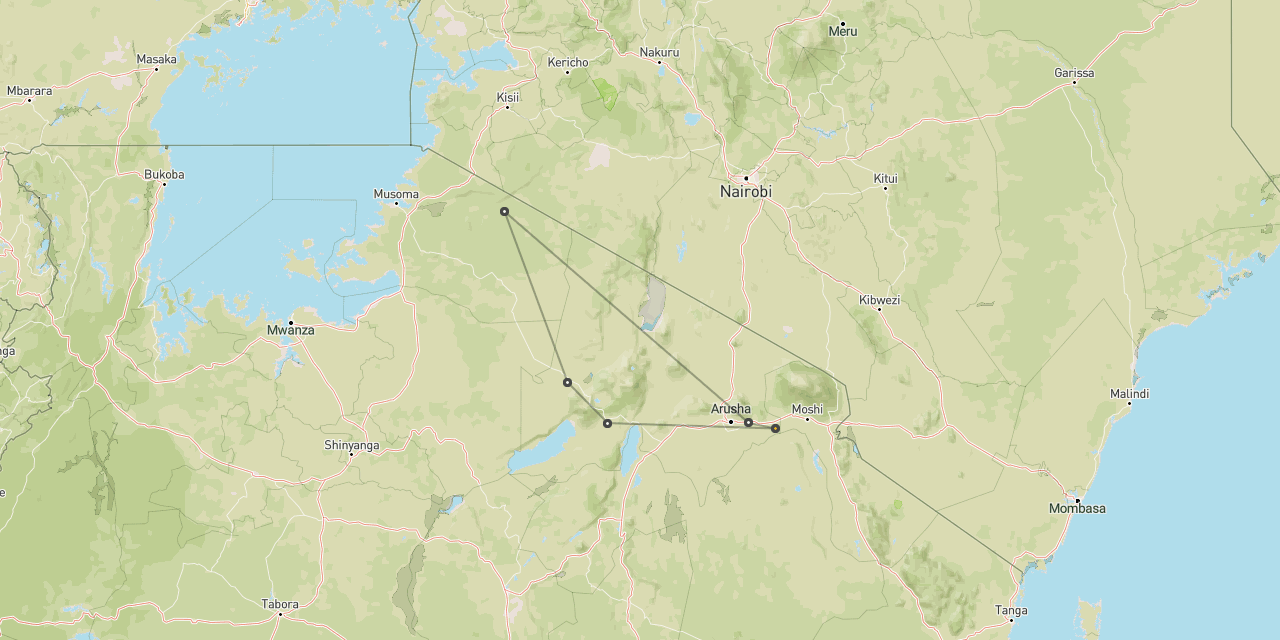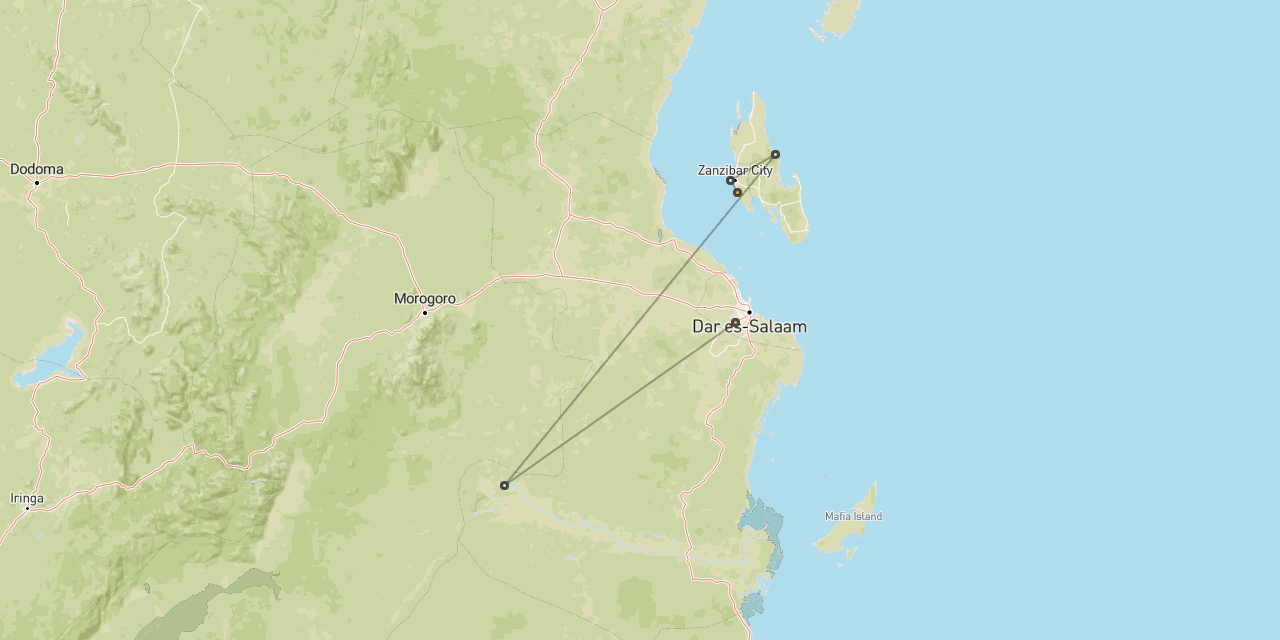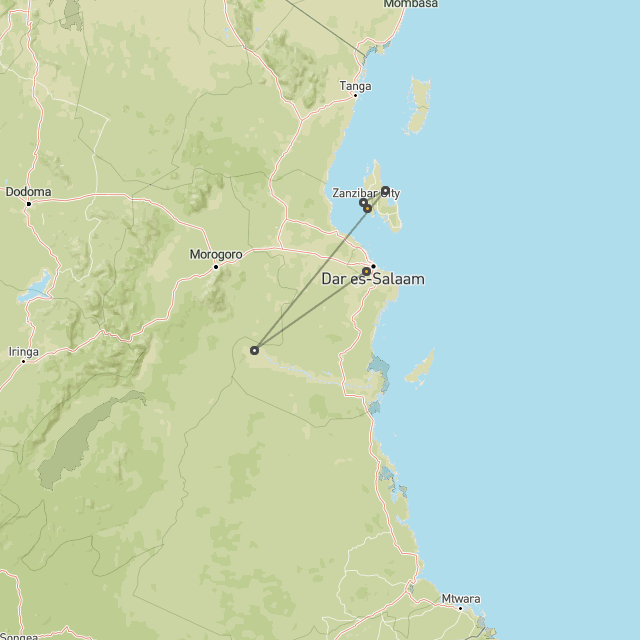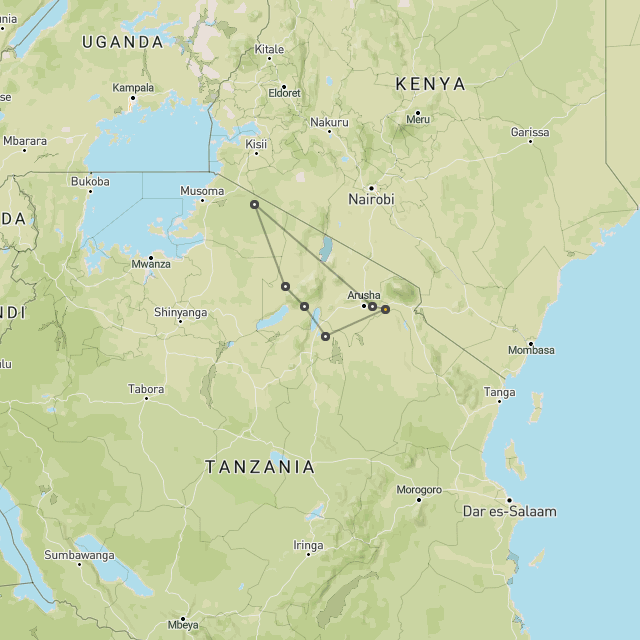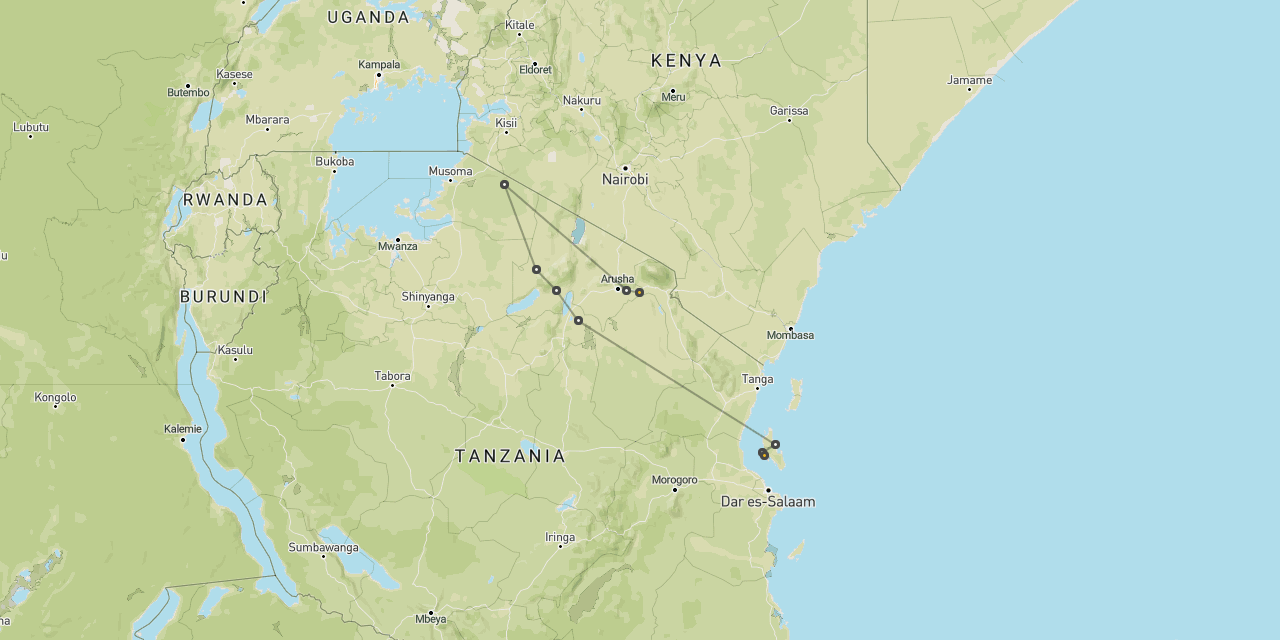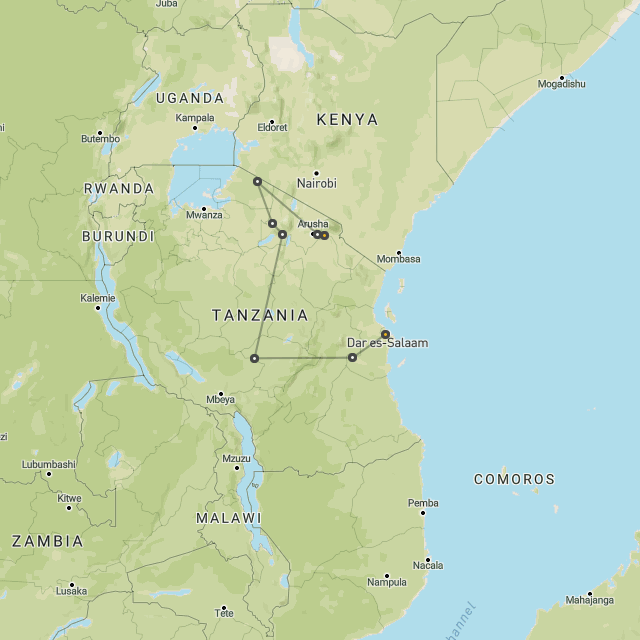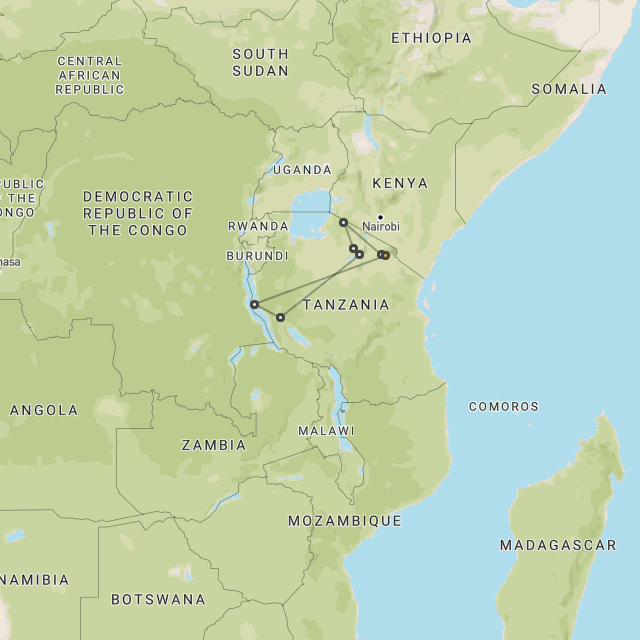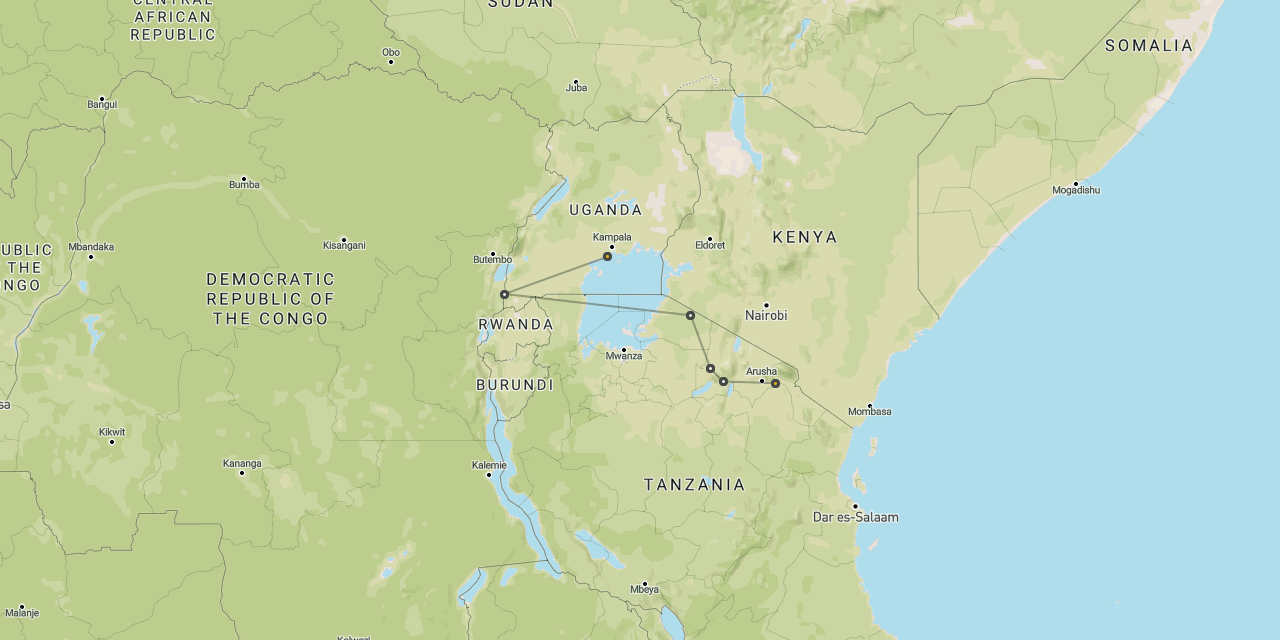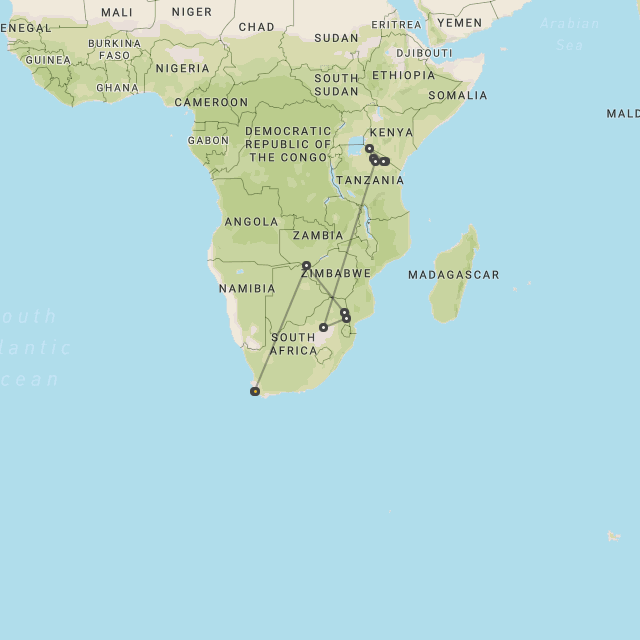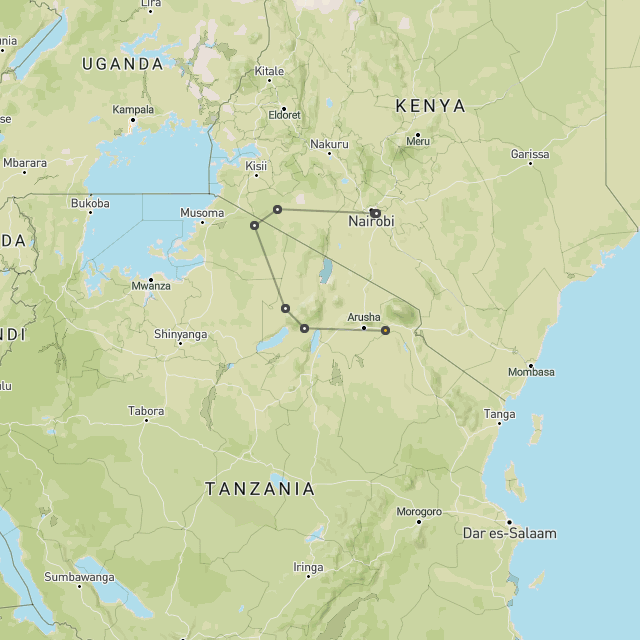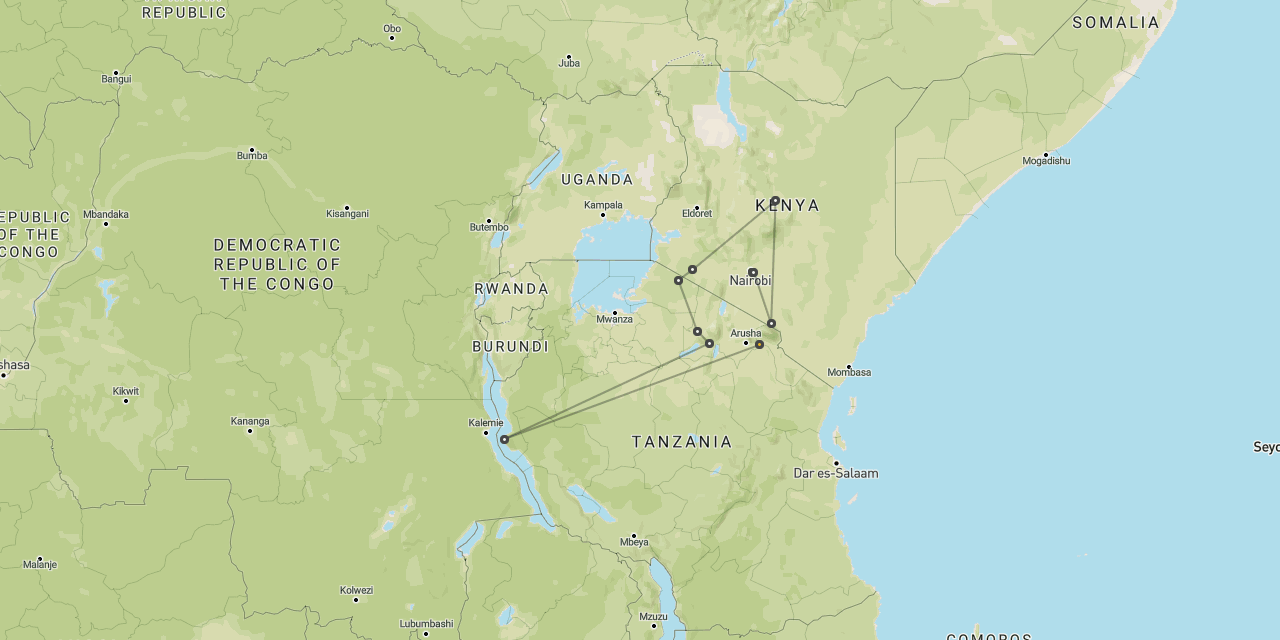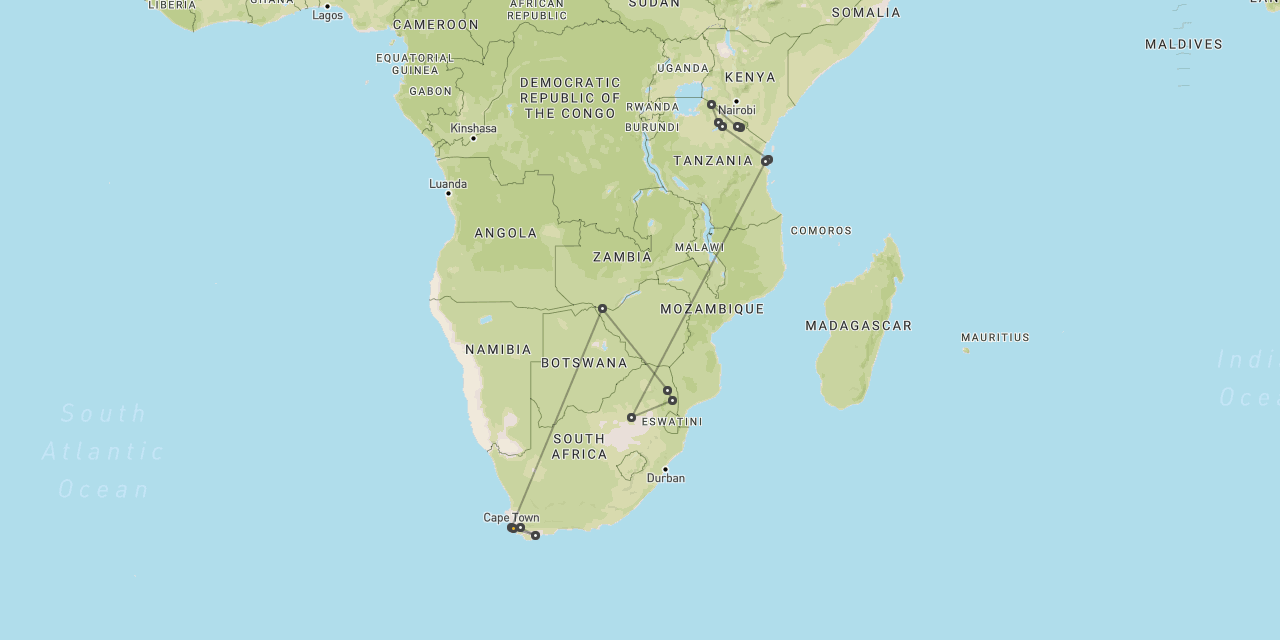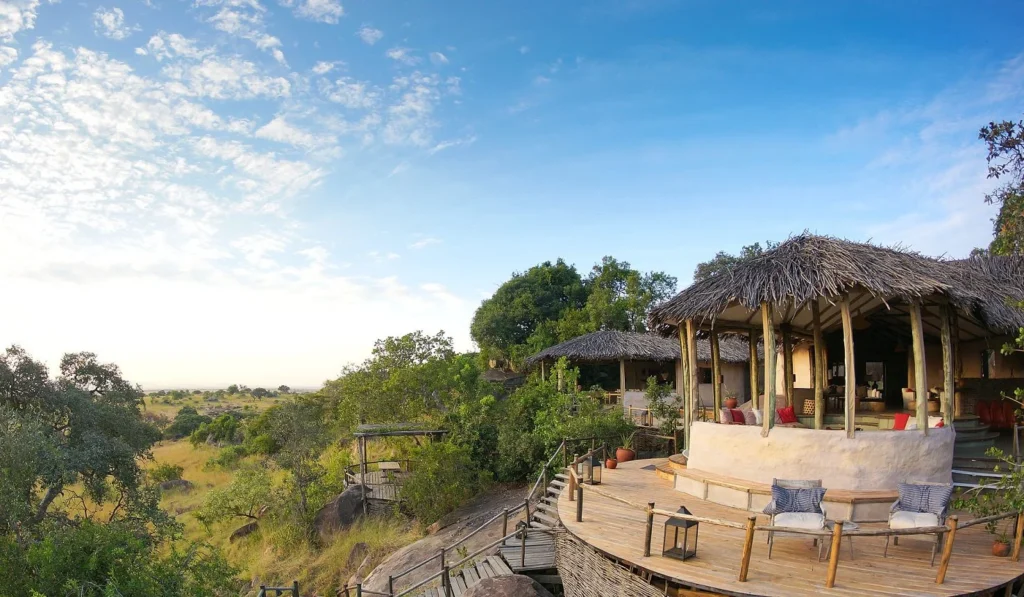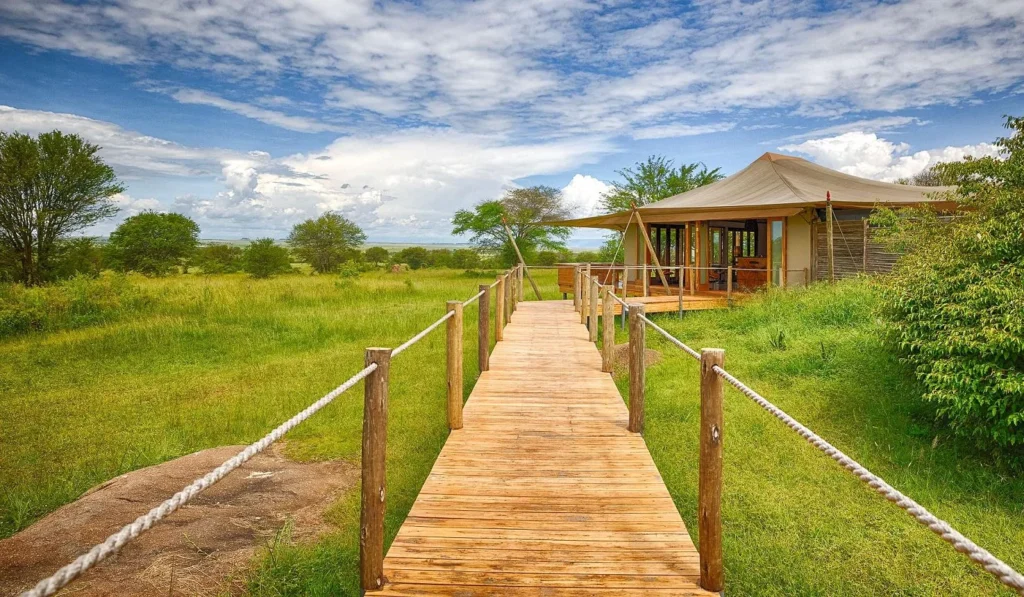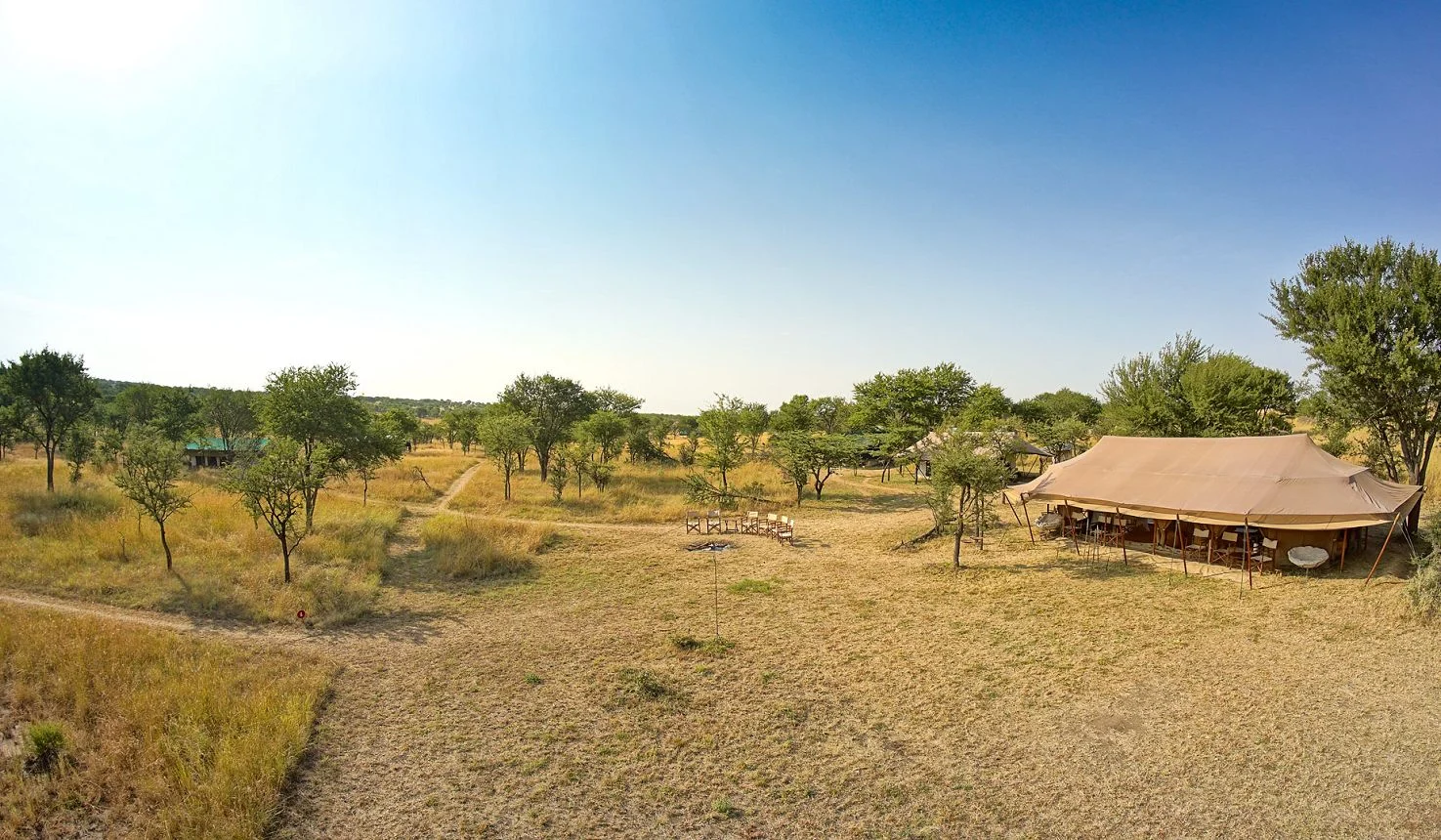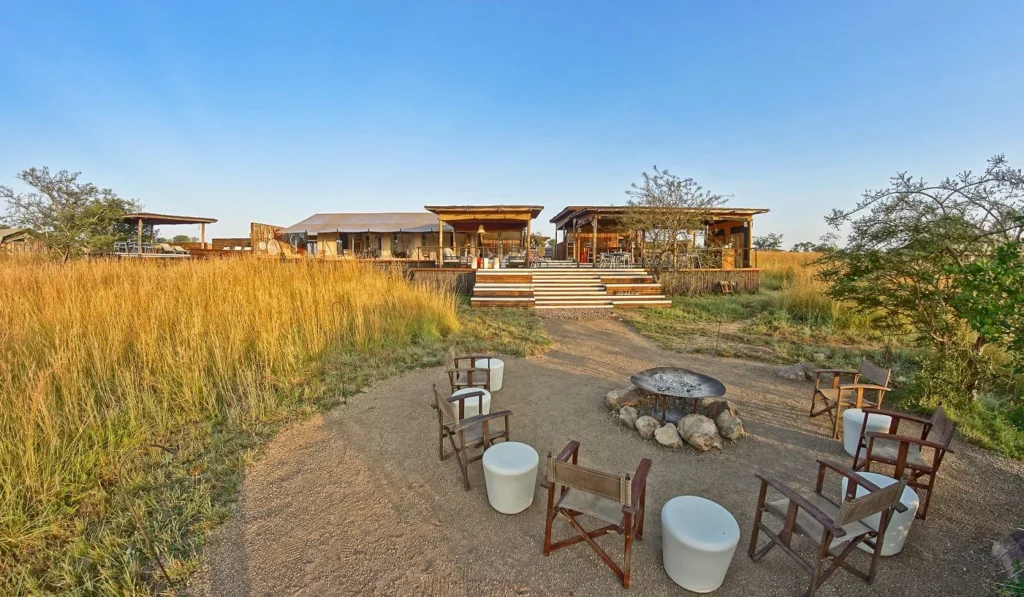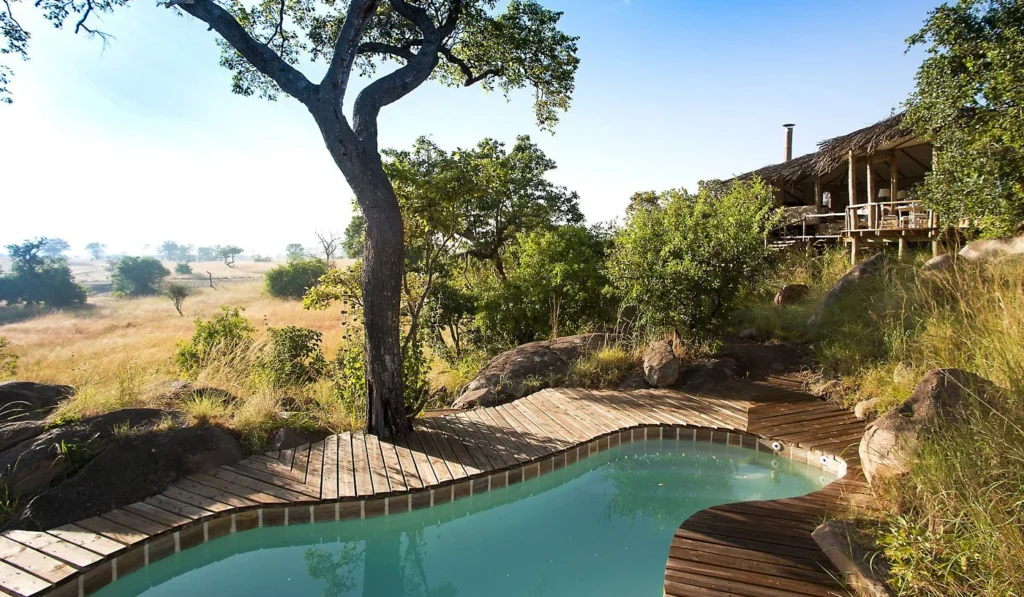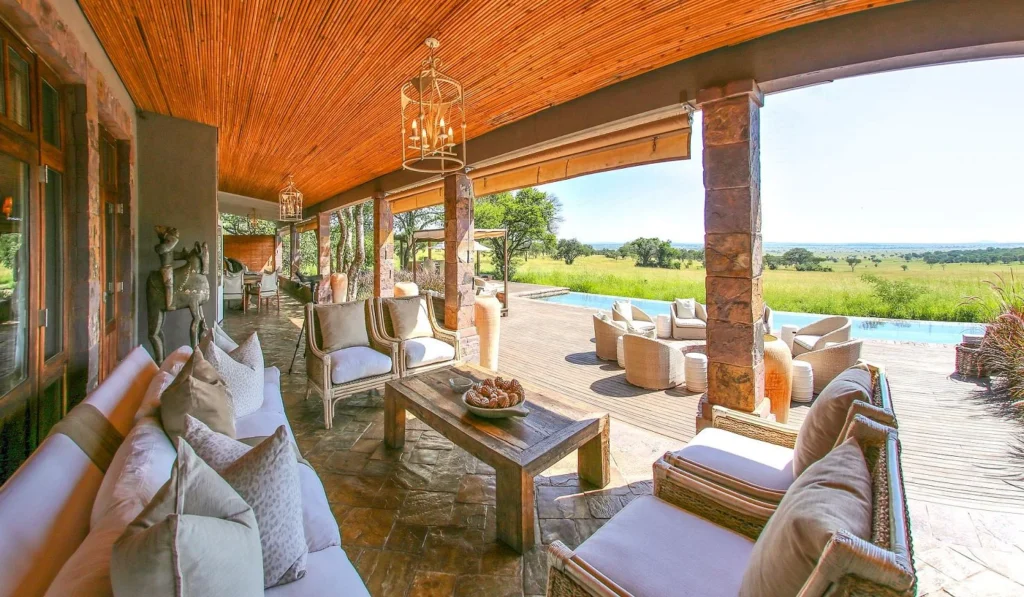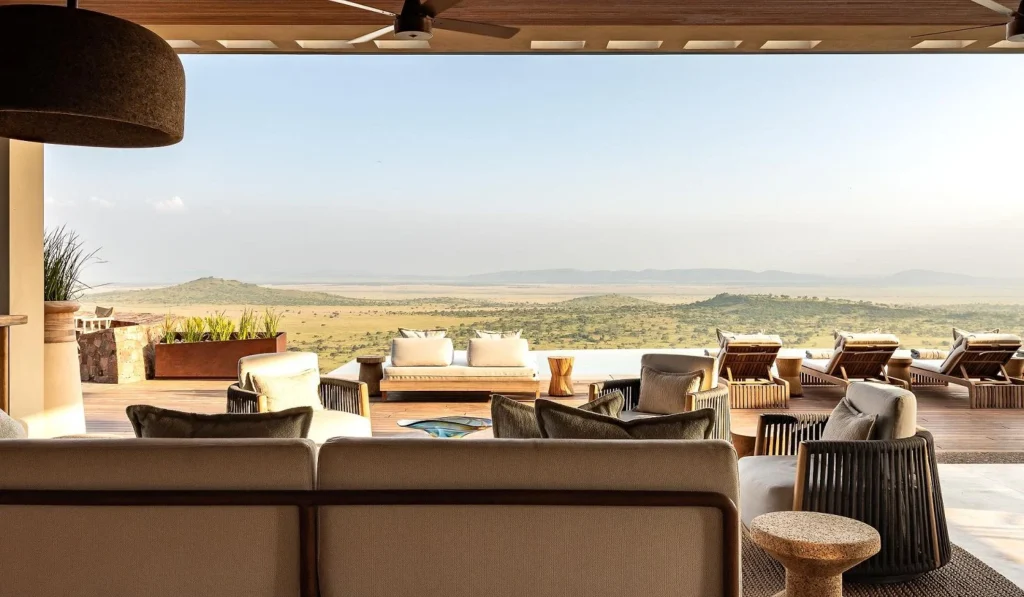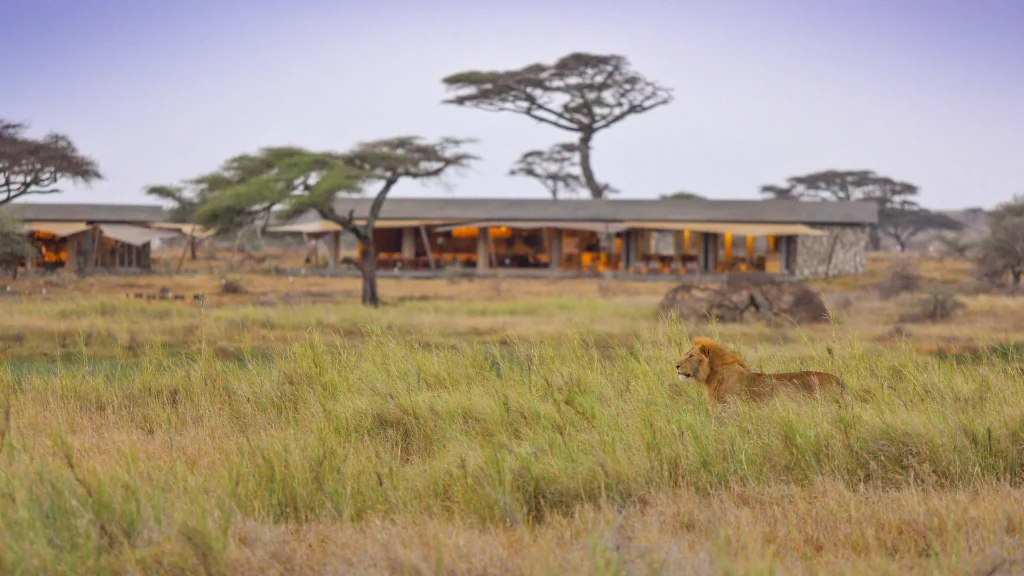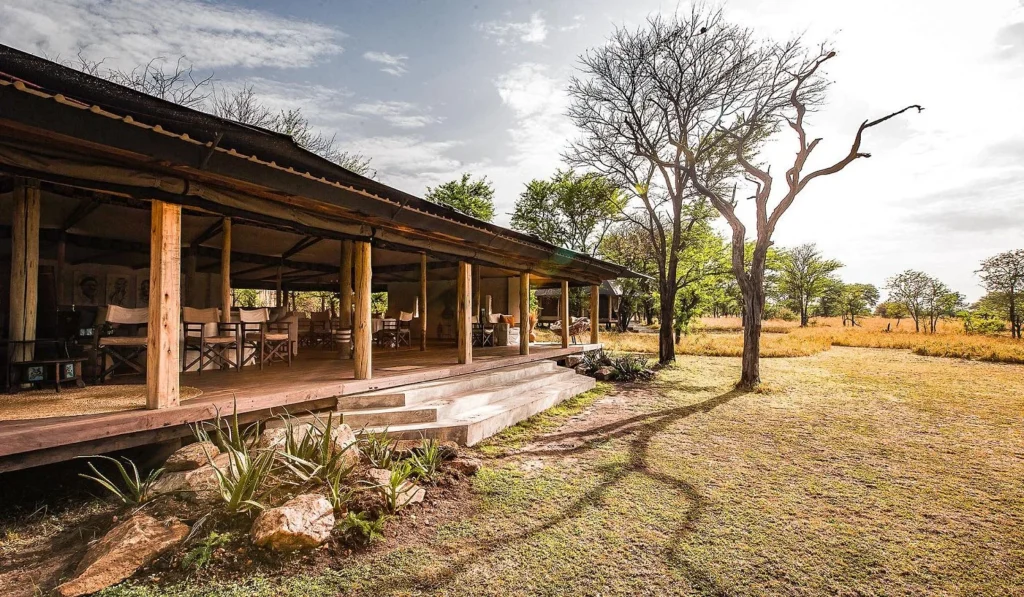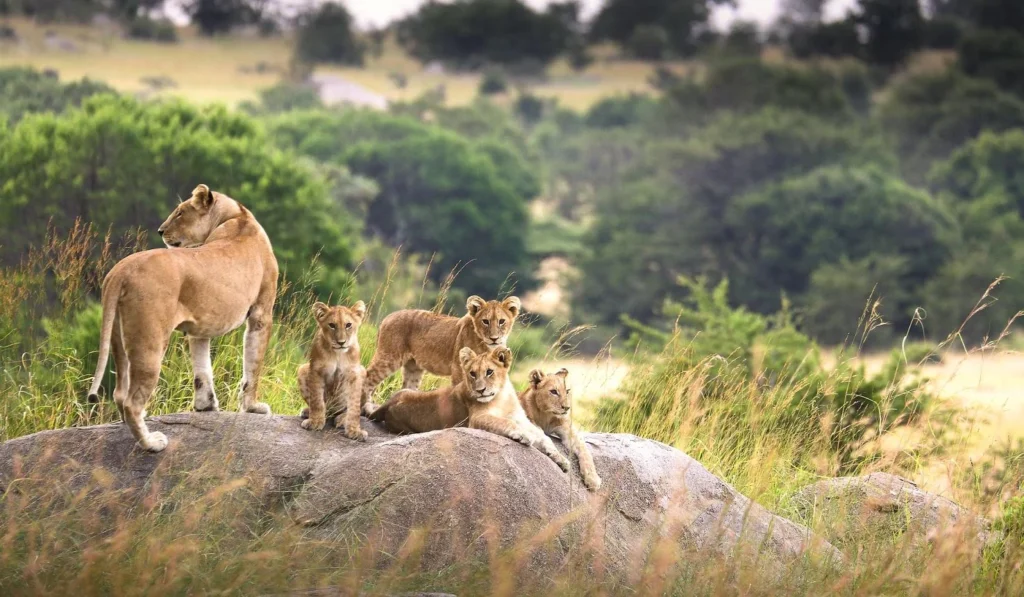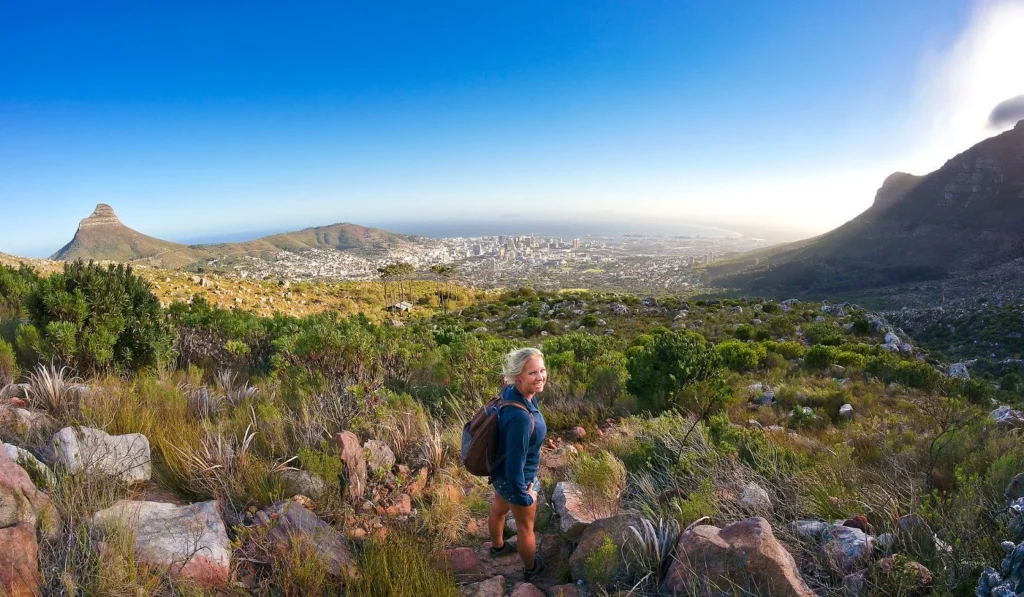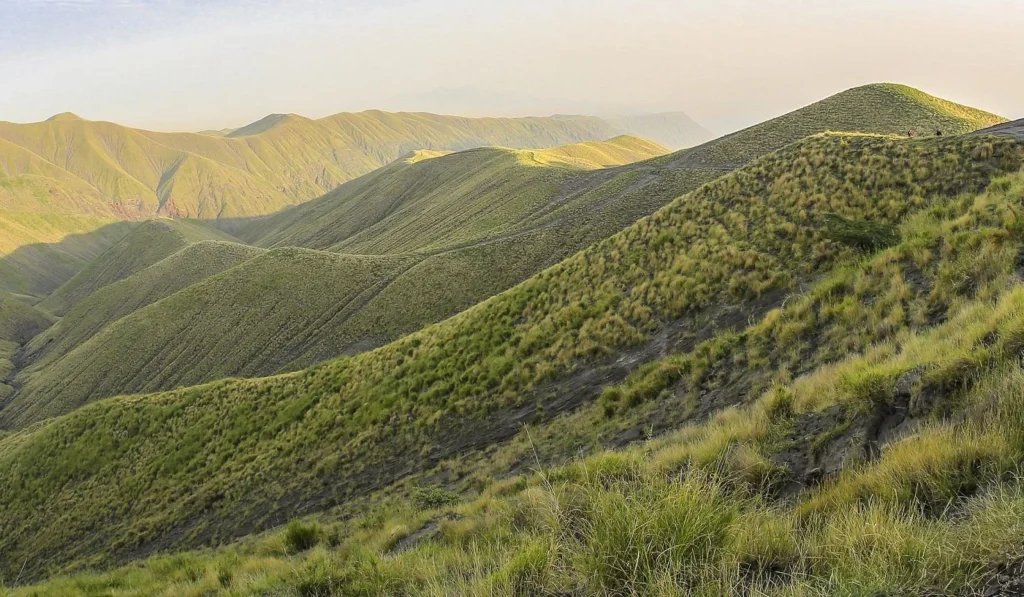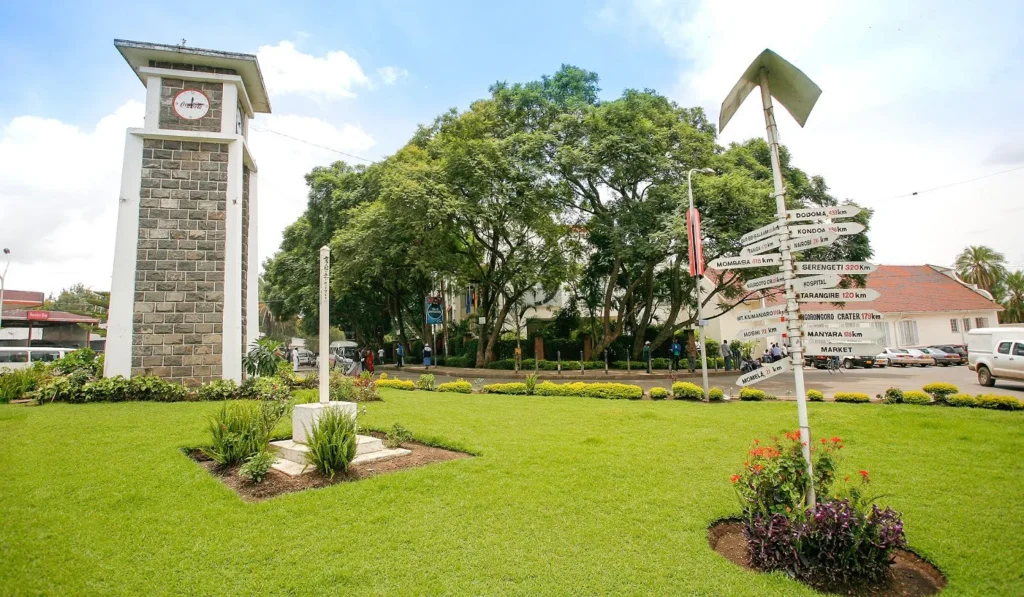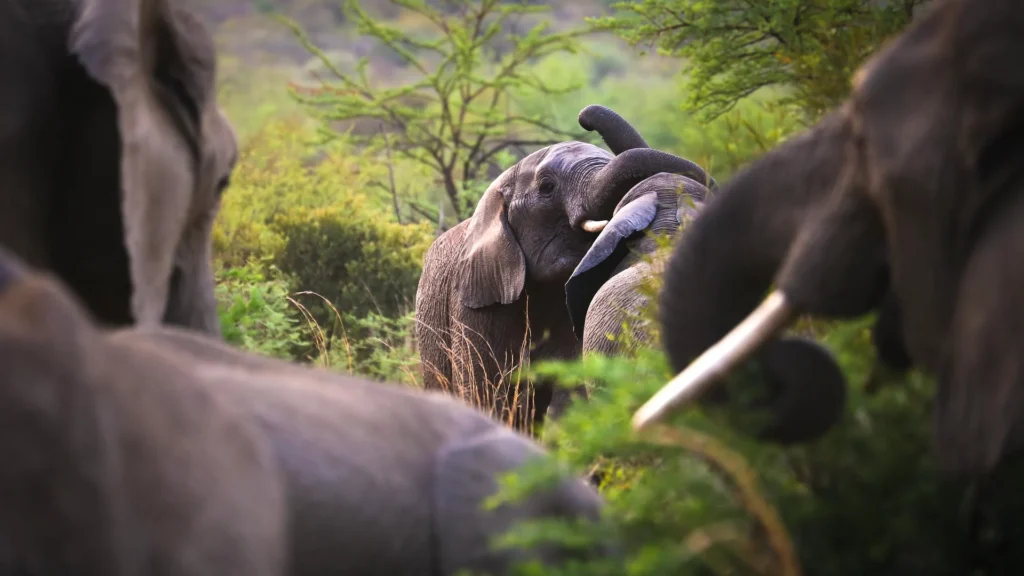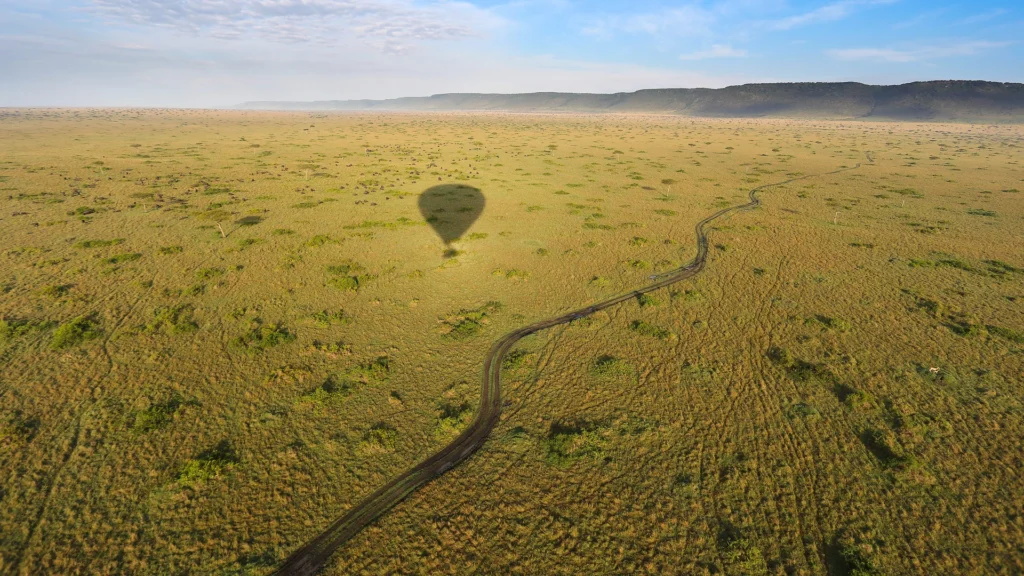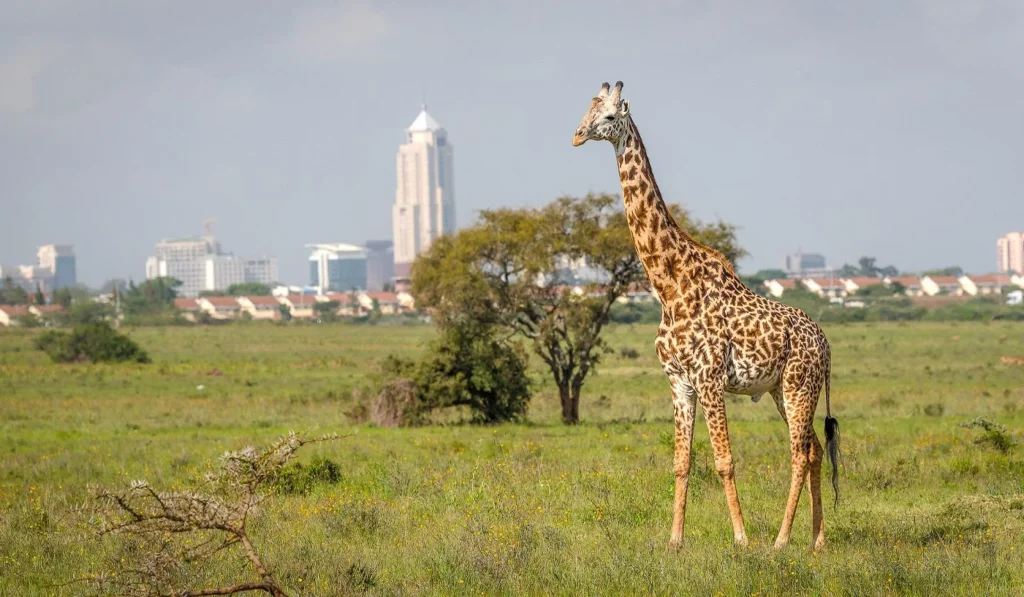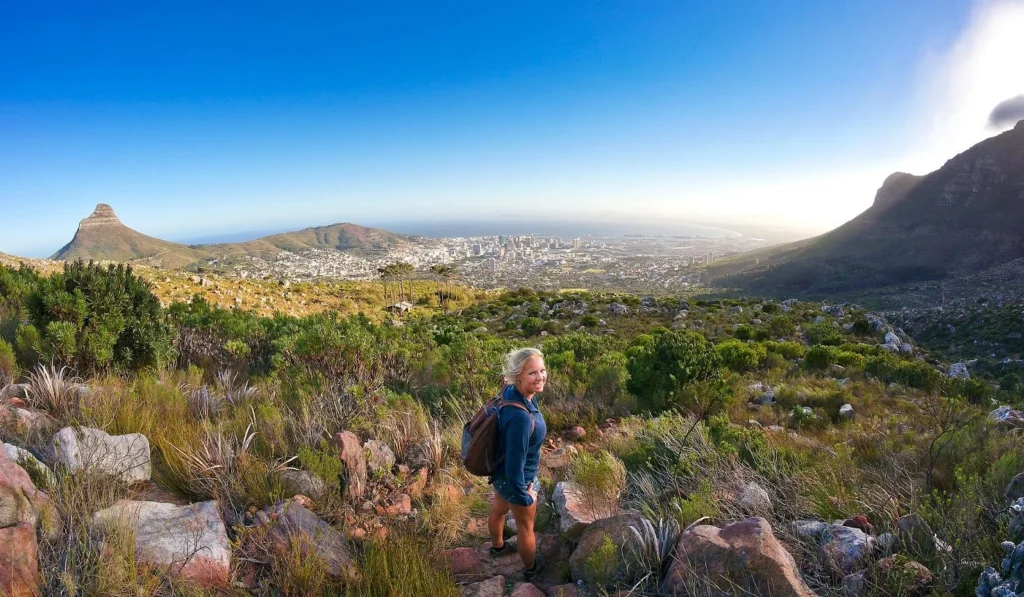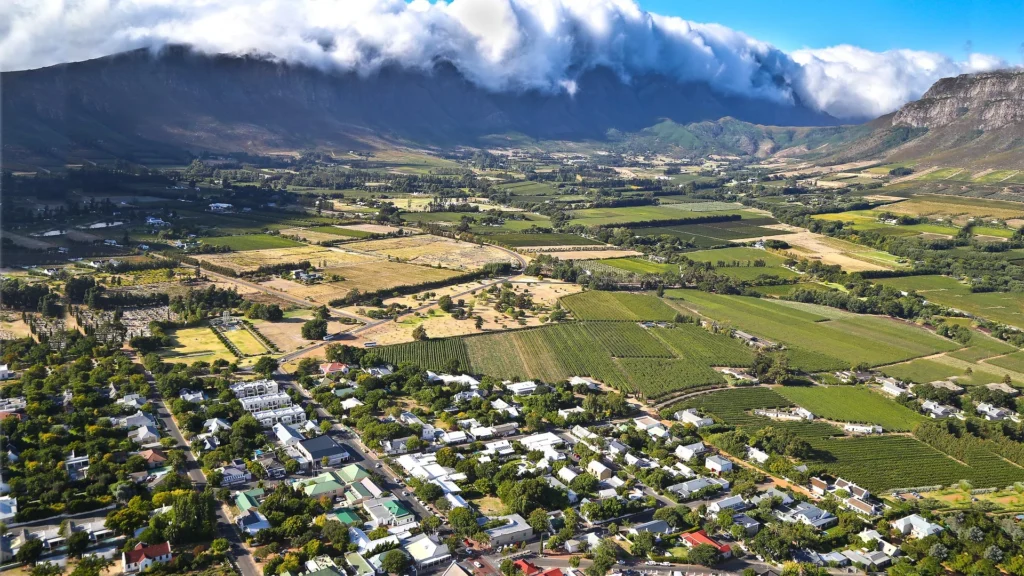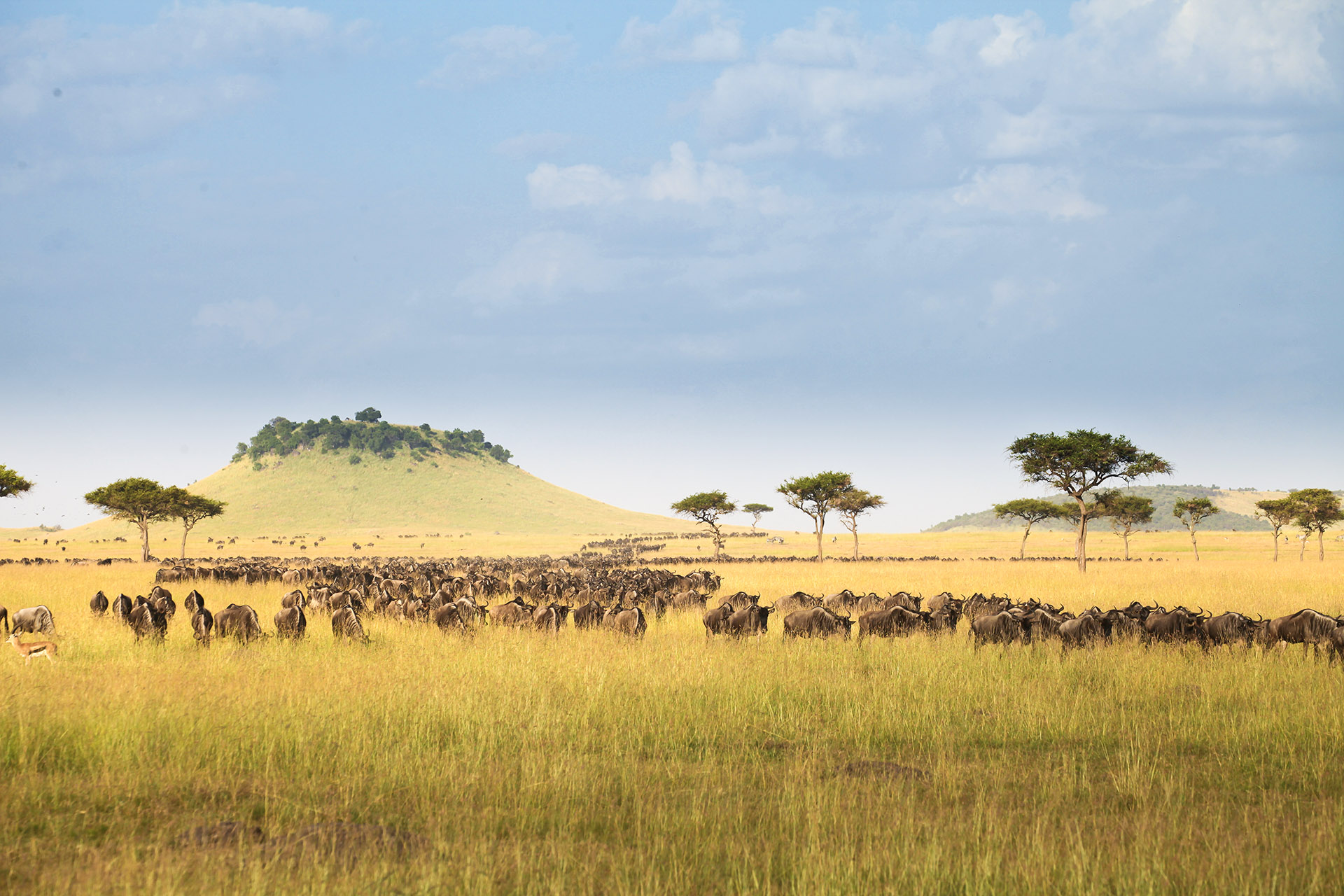
The best ways to experience the Serengeti migration
Serengeti
is arguably the most seasonal
reserve in Africa
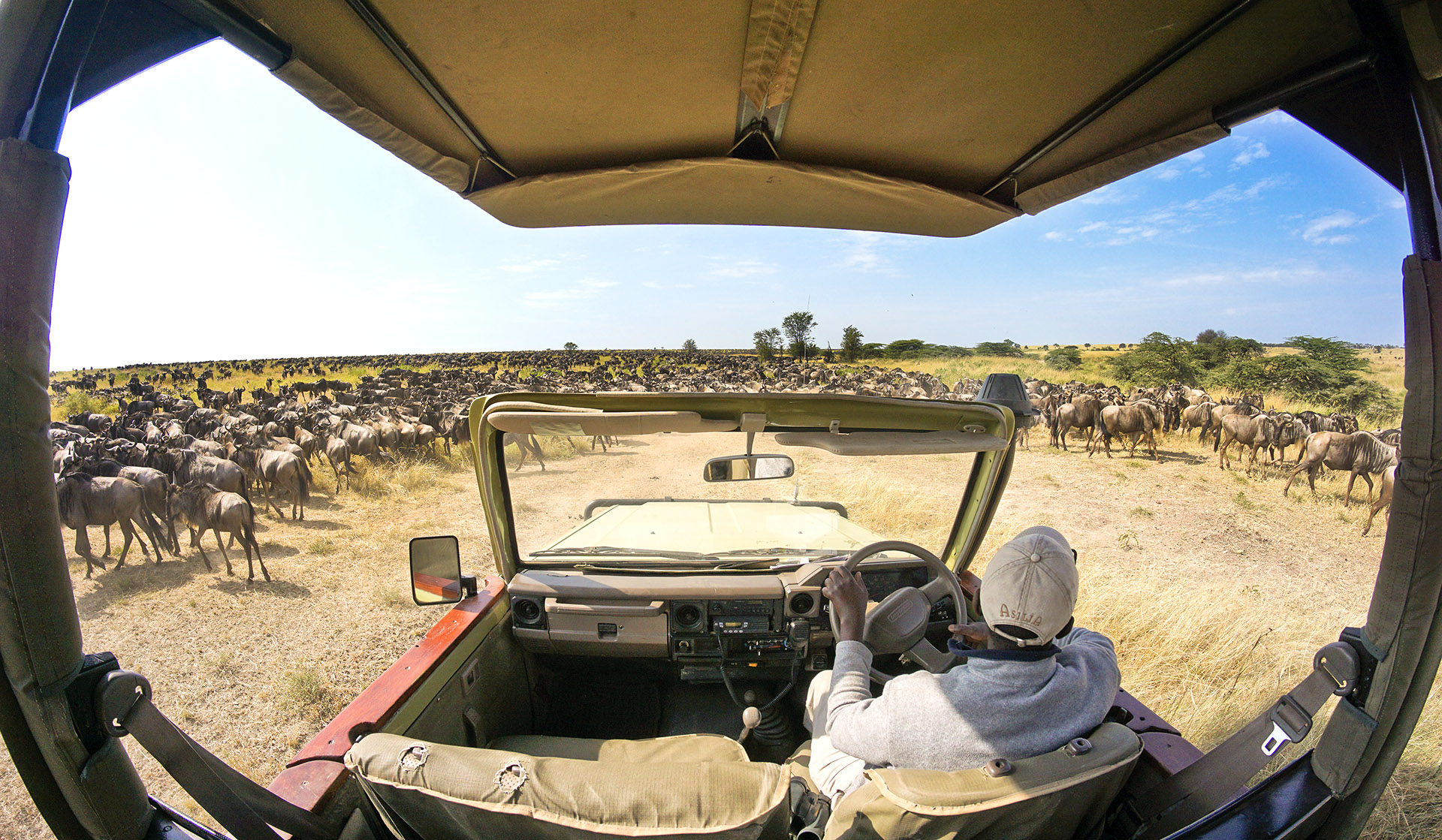
the annual gyration of a great grunting lawn mower
The Serengeti and Maasai Mara areas are best known for their remarkable wildebeest and zebra migration. Well over a million large herbivores munch their way around the region on an annual gyration like a great grunting lawn mower. There’s no beginning or end to this movement, but the nature of the spectacle does vary enormously throughout the year.
The best times to visit are determined by a number of factors including migration activity, general wildlife viewing, weather conditions and visitor traffic.
Your choice of camps and lodges for your trip will be absolutely critical in defining the overall quality and tonality of the experience. It’s not just about how a property looks, it’s about the specifics of its location, the sensitivity of its design, the elegance of its hosting and the subtlety with which it delivers the core safari elements.
In this article we divide the migration year into seven seasons and highlight which properties deliver the very best experiences for each, as well as linking to some relevant sample trips.
Key information …
Dates : 11JAN/28FEB
Rating : 10/10 : outstanding
This green season is generally warm and sunny, but there can be significant rain around, making conditions more challenging and better suited to slightly more outdoorsy visitors. Temperatures should be comfortable.
The period represents the peak period for wildebeest calving, the greatest wildlife show on earth, with prodigious animal viewing and lots of predator action around the edges of the vast herds.
In other areas the wildlife viewing tends to be more difficult as the wildlife has dispersed away from the dry season waterholes and is more difficult to find, so safaris at this time do tend to be mainly focused on the migration action areas.
Visitor numbers are generally low to medium, but clustered around the Ndutu Lakes.
Recommended stay duration in the region during this period is 7 to 12 nights.
spread out on the southern plains and giving birth
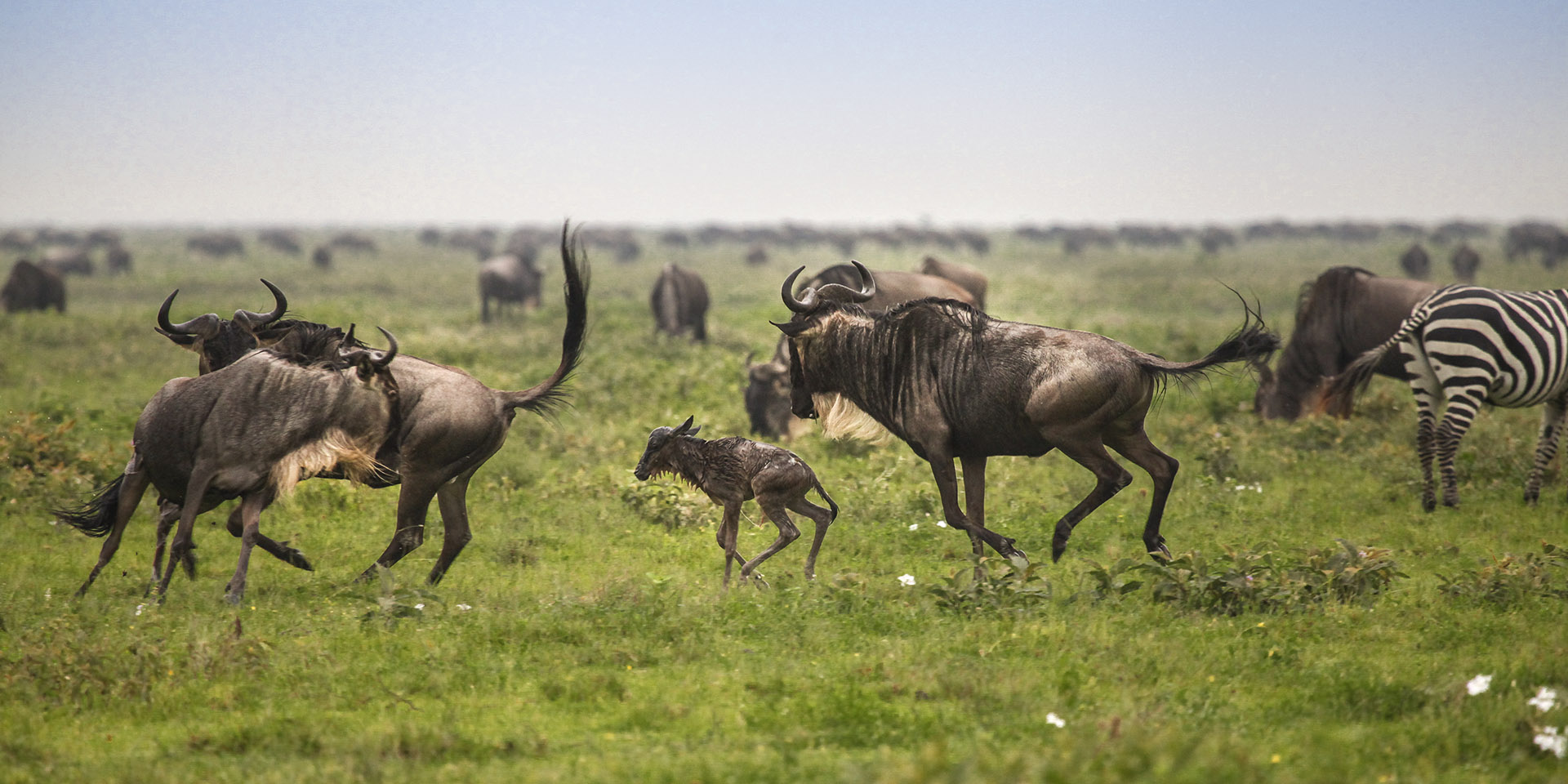
Dates : 01MAR /20MAY
Rating : 8/10 : excellent
The weather during this period can be challenging, with lots of rain usually centred on early April, making this time better suited to more outdoorsy visitors. Although you can get lucky and have sunshine all the way. Temperatures should be comfortable.
The migration calving season usually starts to draw to a close during March, after which the herds start to move north in enormous columns and the rut takes place.
Elsewhere the wildlife viewing continues to be difficult as the wildlife remains dispersed away from the dry season waterholes and is more difficult to find so the main focus remains the migration action areas.
Visitor numbers are low to very low, which can make this a really magical time, you really can have the place to yourselves, especially in the more remote Kusini, Kakessio and Mwiba areas.
Recommended stay duration in the region during this period is 5 to 9 nights.
huge columns of animals starting north

Dates : 21MAY/30JUN
Rating : 8/10 : excellent
The weather during this period should be clear and sunny, with lots of spring flowers and baby animals around. Temperatures can get a little cool at night.
As the migration herds continue north they pass through the valleys of the Mbalageti Hills and flood out into the Serengeti West, Serengeti Grumeti and Serengeti Central areas, with minor crossings on the Grumeti Stream.
Elsewhere the wildlife viewing is starting to improve, with foliage cover dying back and animals starting to move back towards the dry season waterholes, so locations elsewhere in Serengeti and further afield in Tarangire and Manyara are becoming more of a draw.
Visitor numbers rise through the period from low to medium, with significant clustering around the core central areas and on the main track into the Western Corridor, so some traffic avoidance planning is necessary. The private areas of Serengeti Grumeti become particularly attractive.
Recommended stay duration in the region during this period is 7 to 12 nights.
continuing north after the rut
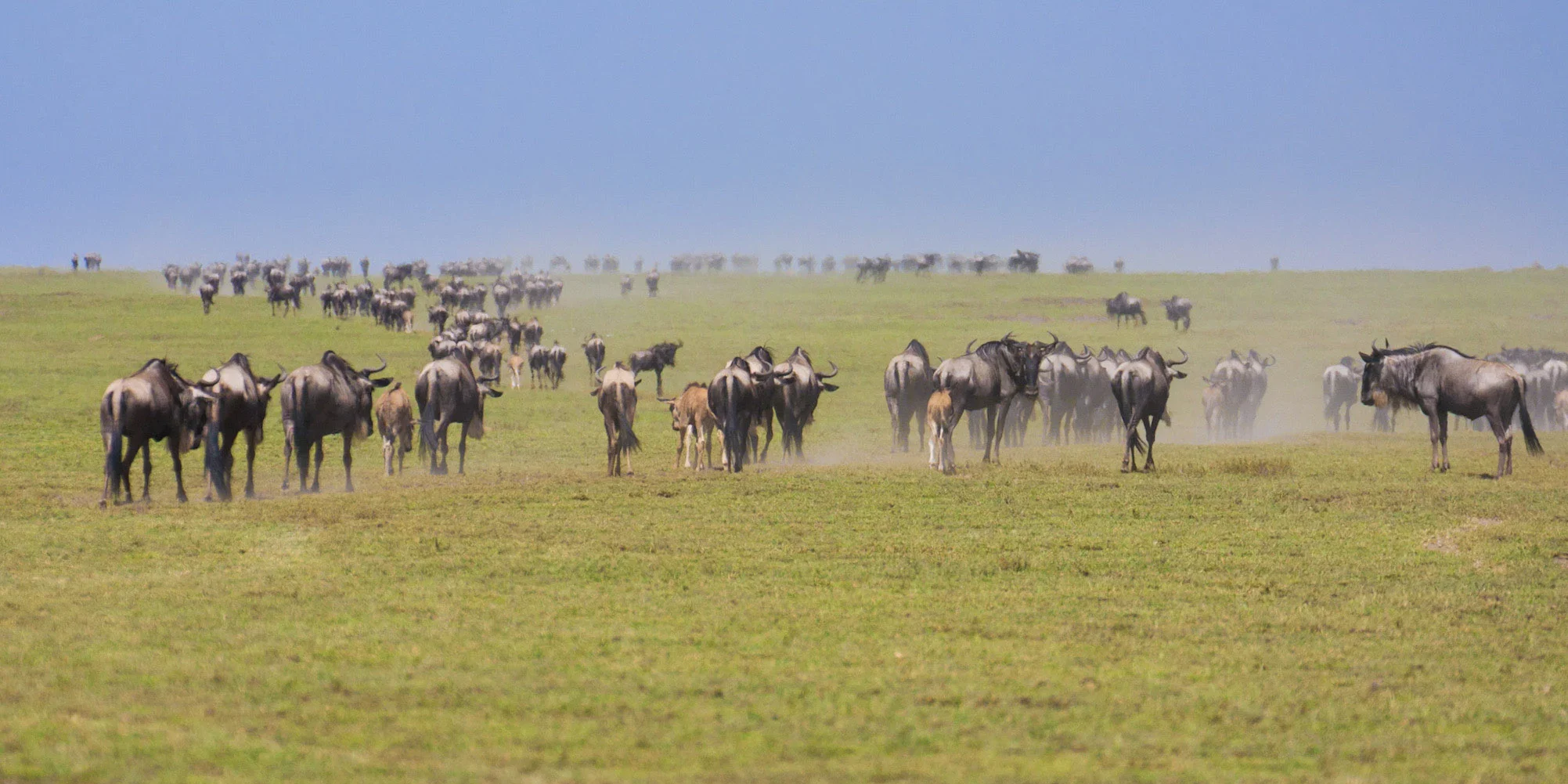
Dates : 01JUL/31JUL
Rating : 7/10 : very good
The main dry season is well underway, so weather should be clear and sunny throughout. Temperatures can still get a little cool at night.
As the herds continue northbound, there’s usually a period of a few weeks around early July when they ‘go missing’ amongst the inaccessible forests of the Northern Corridor. Before they do so, they are accessible in the Serengeti Central and Serengeti Grumeti areas. After this disappearance, usually by mid to late July, the lead herds start to emerge onto the plains of Serengeti Mara in the far north. So you may need to stay in multiple locations to hedge your bets against this uncertainty.
Elsewhere in Serengeti large numbers of lions and cheetahs migrate off the plains to central areas at this time, making for prodigious cat viewing. Further afield the wildlife viewing in Tarangire and Manyara is also greatly improved as the animals move in towards water.
Visitor numbers are high to very high, so traffic avoidance planning is extremely important, with the private areas of Serengeti Grumeti becoming particularly attractive.
Recommended stay duration in the region during this period is 9 to 14 nights.
lost in the acacia woodlands of the north
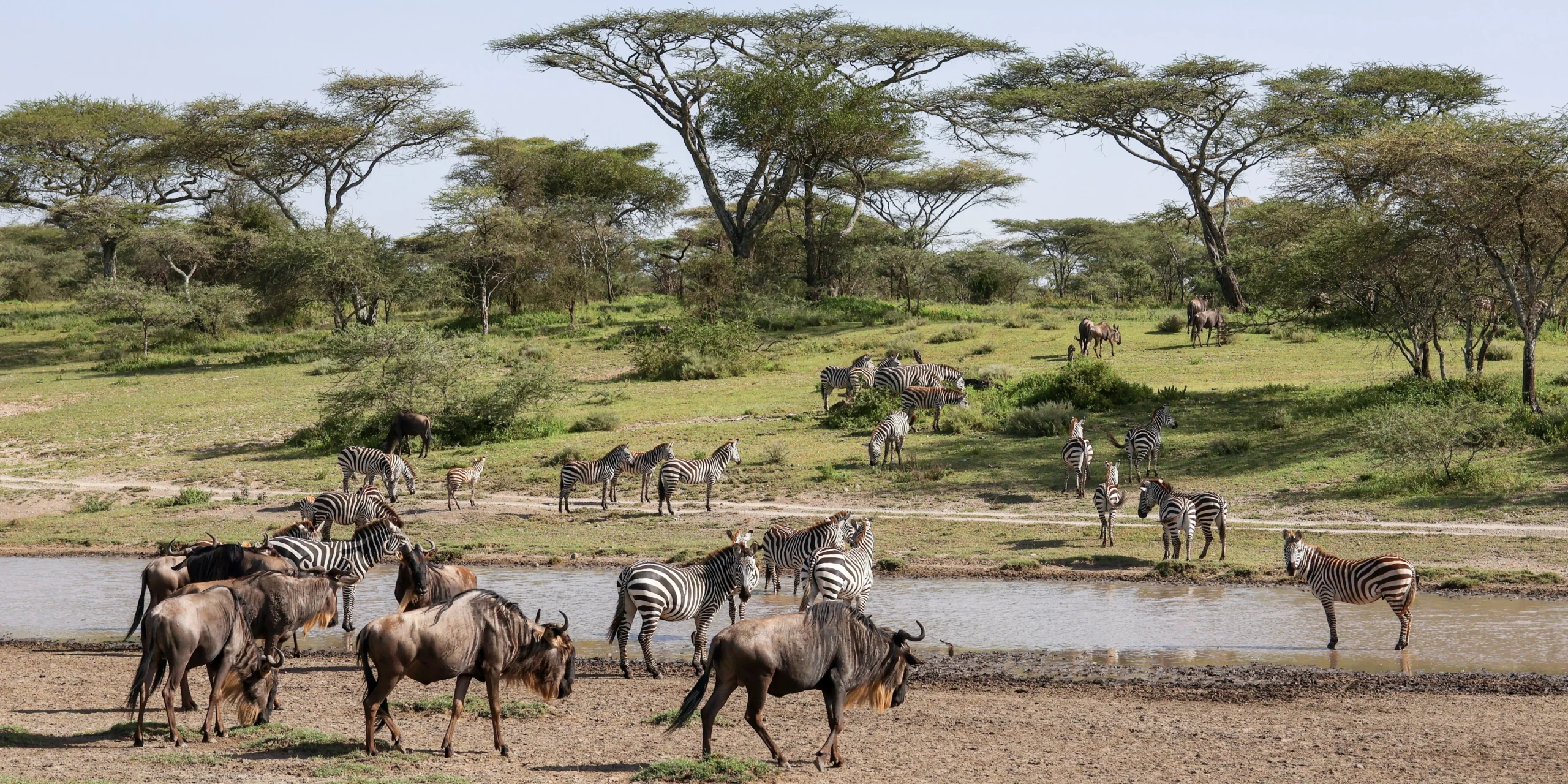
Dates : 01AUG/31OCT
Rating : 10/10 : outstanding
This is the main dry season, so the weather should be clear and sunny throughout, although perhaps becoming a little hazy as the season wears on. Temperatures should be comfortable.
Throughout this season the main migration herds should be gyrating slowly around the plains of Serengeti Mara in the far north, straddling the border with the Maasai Mara in Kenya. This is the time to witness impressive river crossings and crocodile action along the Mara River.
Elsewhere in Serengeti large numbers of lions and cheetahs will have migrated off the plains to central areas, producing continued prodigious cat viewing. Further afield the wildlife viewing in Tarangire and Manyara is strong as the animals cluster around the few permanent water sources.
Visitor numbers are high to very high, so traffic avoidance planning is extremely important.
Recommended stay duration in the region during this period is 9 to 14 nights.
river crossings on the northern plains
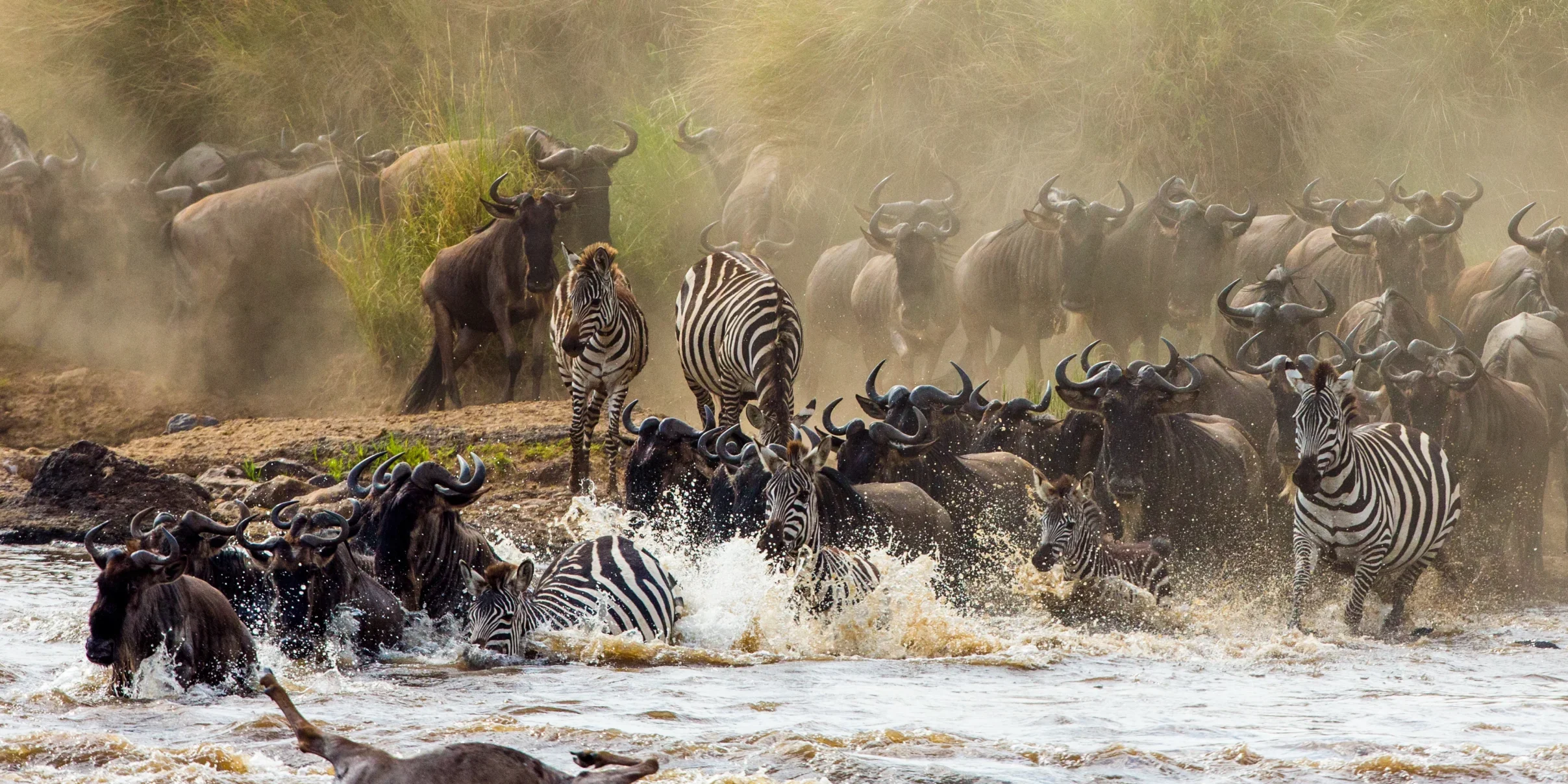
Dates : 01NOV/14DEC
Rating : 9/10 : superb
The weather during this period is largely dry and sunny, sometimes with dramatic thunderstorms rolling across the plains. This is the time when everyone and everything is waiting and hoping for rain. But the short rains are highly unpredictable, there may be deluges in November or there may be no rainfall all the way through to March. Temperatures should be comfortable.
As soon as the first lightning strikes above the volcanoes of Ngorongoro the wildebeest and zebras raise their heads and start to move south. They want to coincide their arrival at the calving grounds on the short-grass plains with the first showers of rain. But this is a very unpredictable time and in reality the migration herds can end up just about anywhere.
Elsewhere in Serengeti the large numbers of lions and cheetahs that have congregated in central areas may start to disperse onto the surrounding plains if there has been significant rain. Further afield the wildlife viewing in Tarangire and Manyara is also very dependent on whether or not those areas have experienced rain.
Safari can be superb, but you need to stay in multiple locations to hedge your bets against this uncertainty. Rain or no rain there are big wins, you just have to be sure you are in position to take advantage either way.
Visitor numbers are low to very low, which is a real boon.
Recommended stay duration in the region during this period is 9 to 14 nights.
the long trek southwards
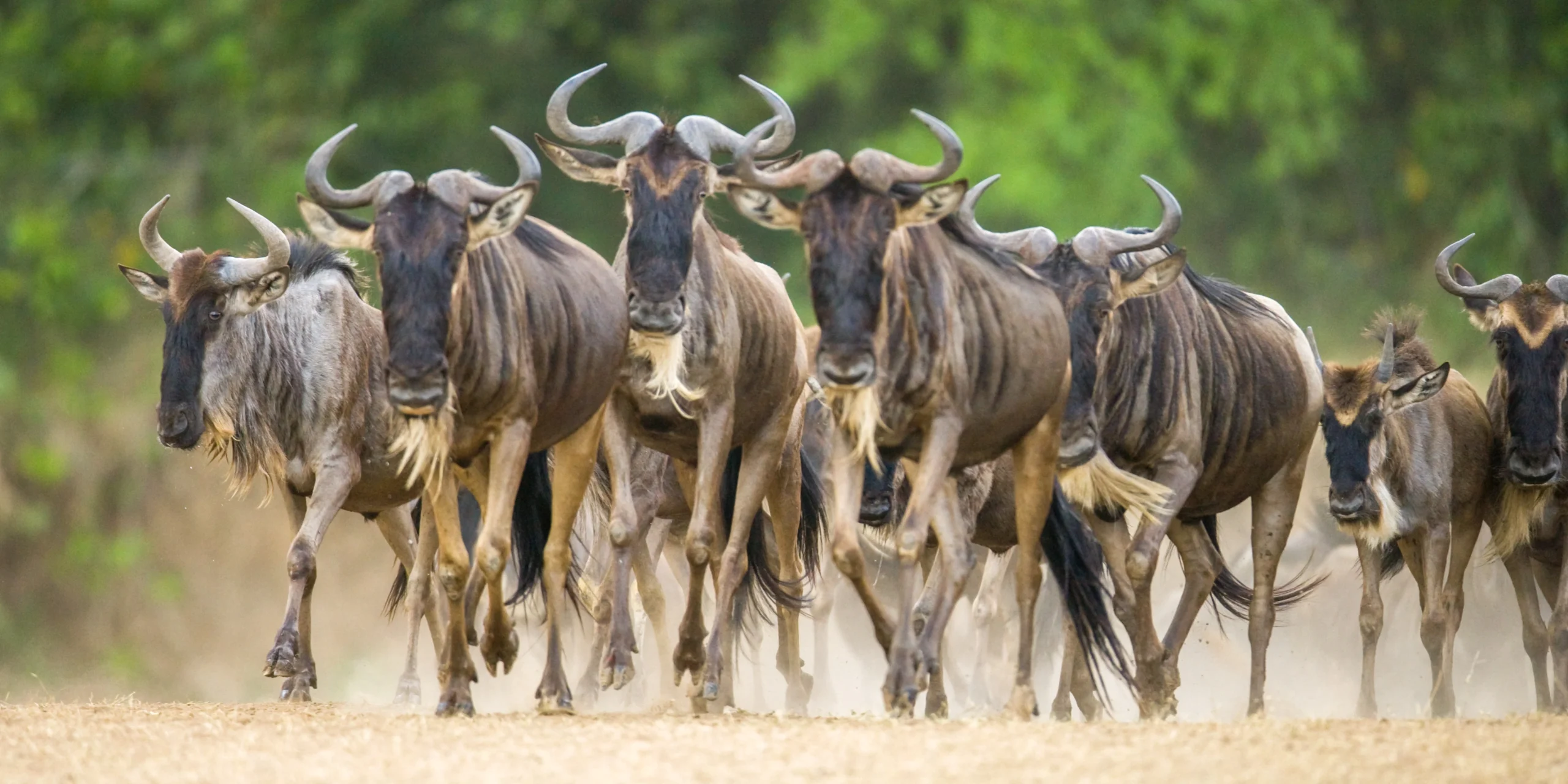
Dates : 15DEC/10JAN
Rating : 9/10 : superb
The weather during this period is largely dry and sunny, but still with the potential for showers and thunderstorms rolling across the plains. Every seven to ten years there tends to be a big washout, which could be related to El Niño. Temperatures should be comfortable.
The period sees a continuation of the previous season in terms of the unpredictability of wildlife movements, although the centre of gravity for the migration herds should have shifted further south. If there have been showers in the south then the herds will move out onto the short-grass plains and may well start to calve early.
Elsewhere in Serengeti the large numbers of lions and cheetahs that congregated in central areas should have started to disperse onto the surrounding plains. Further afield the wildlife viewing in Tarangire and Manyara is also very dependent on whether or not those areas have experienced rain.
Again safari can be superb, but you do need to stay in multiple locations to hedge your bets against this uncertainty. Rain or no rain there are big wins, you just have to be sure you are in position to take advantage either way.
Visitor numbers increase dramatically over the Christmas and New Year period, being high to very high, so traffic avoidance planning is extremely important.
Recommended stay duration in the region during this period is 9 to 14 nights.
herd arrival into the southern calving grounds
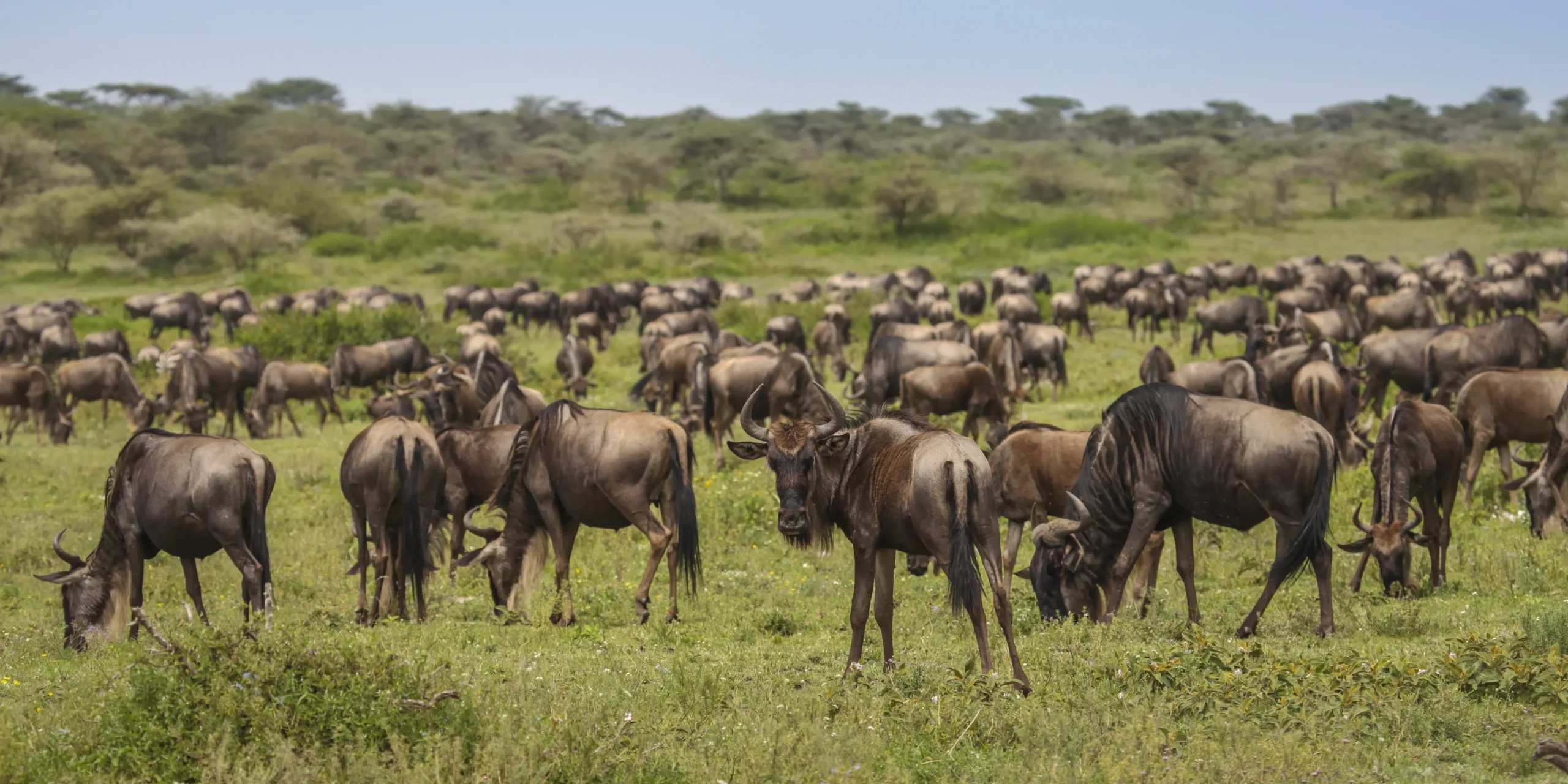
Further reading
- Safari in Serengeti
- The best ways to experience the Serengeti migration
- The best balloon safari in Serengeti
- The best ways to avoid traffic in Serengeti
- The best time of year for safari in Serengeti
- The best locations for safari in Serengeti
- Safari in Serengeti Central
- Safari in Serengeti Grumeti
- Safari in Serengeti Mara
- Safari in Serengeti North
- Safari in Serengeti Southcentral
- Safari in Serengeti Southeast
- Safari in Serengeti Southwest
- Safari in Serengeti West
let us know your thoughts about Tanzania
and we will help you create the perfect trip
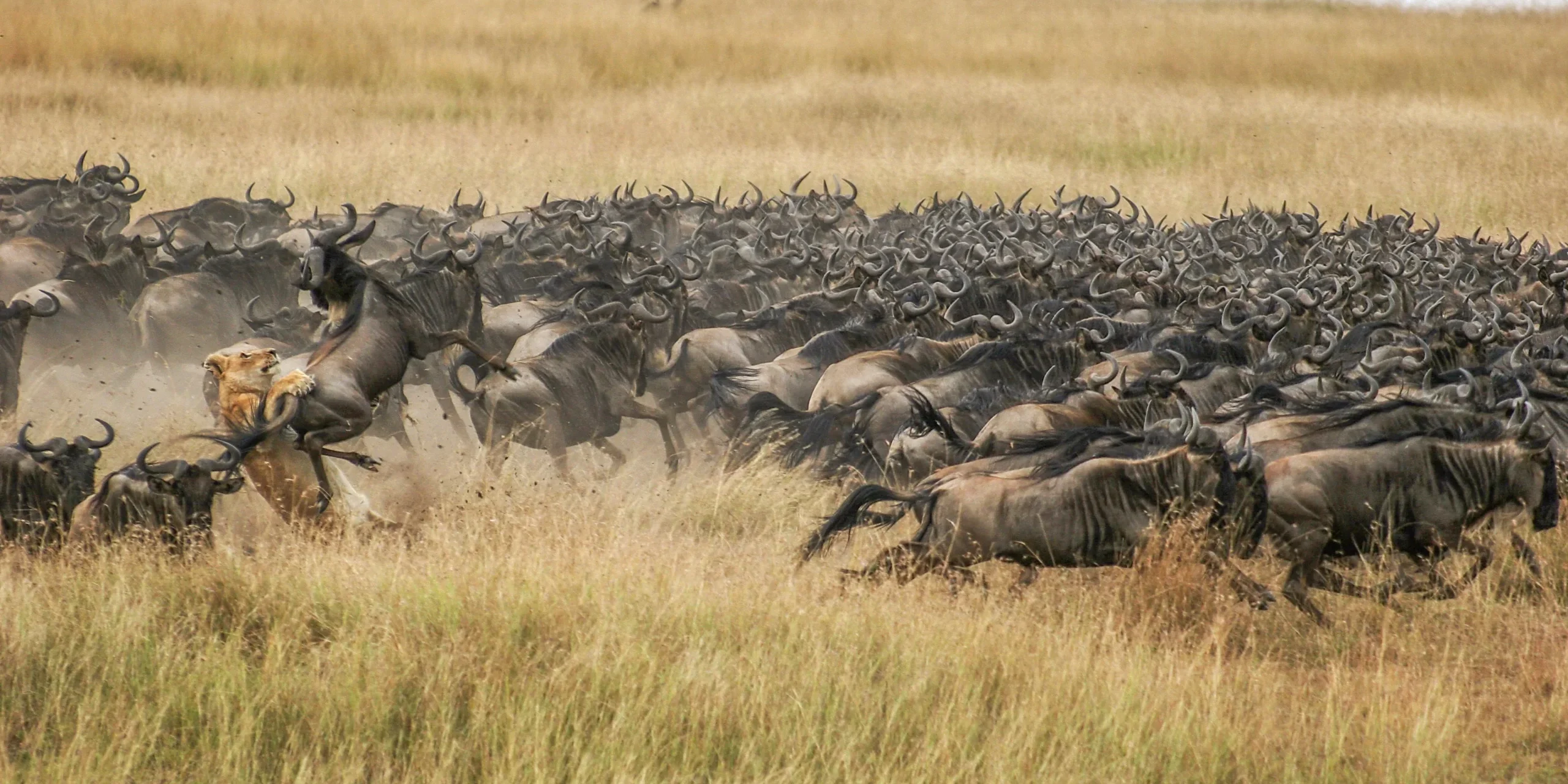
Extraordinary tailor-made adventures,
from earthy and edgy to easy and extravagant
From around USD 2500 per person, you set the ceiling
Sample Trips
Here are some of our popular trip shapes
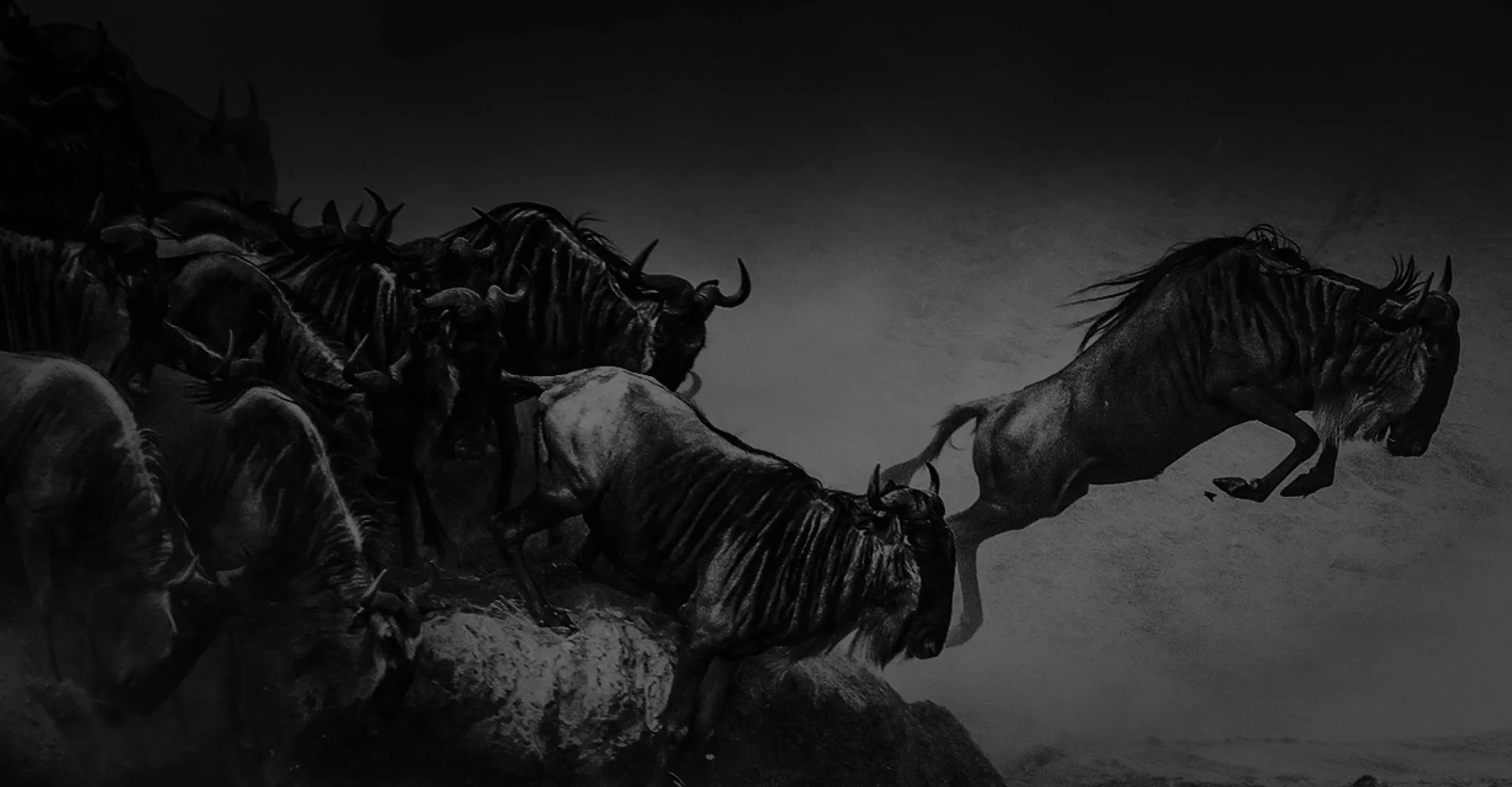
Get started on your trip
It’s never too soon to get in touch, we are here to help with every stage of your planning.
Best Lodges
We regularly inspect and photograph all of the the best lodges, to ensure that we always recommend the most suitable options
Key Locations
Take a look around related locations. Click ‘View more’ to explore locations further afield.
